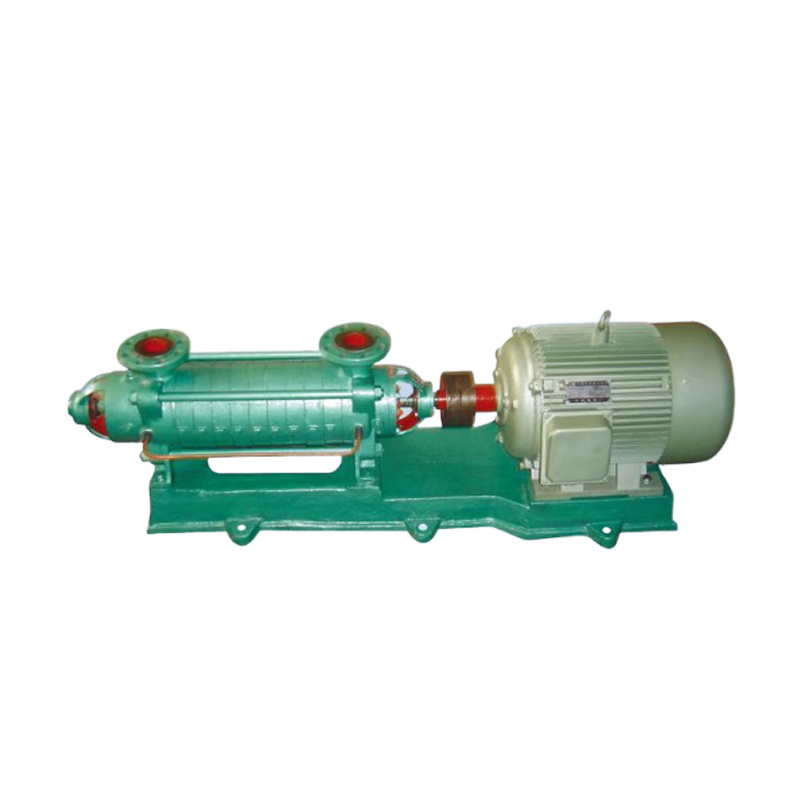Understanding Multistage Pumps: Essential Insights for Industrial Applications
Jul 14,2025

Multistage pumps are vital components in various industrial applications, designed to transport fluids efficiently under high pressure. Unlike single-stage pumps, which utilize one impeller to generate pressure, multistage pumps employ multiple impellers arranged sequentially. This configuration allows them to achieve higher pressures, making them ideal for applications requiring significant lifting capabilities.
The primary operation of a multistage pump involves the fluid entering the first impeller, where kinetic energy is imparted. As the fluid exits this stage, it flows to the next impeller, where additional energy is added. This process repeats for each impeller, with the fluid gaining pressure at each stage. As a result, multistage pumps can effectively pump fluids to considerable heights or deliver them at high pressures, which is essential in sectors such as water treatment, chemical processing, and oil extraction.
One of the main advantages of multistage pumps is their adaptability. They can handle a broad range of flow rates and pressures, making them suitable for various applications. For instance, in municipal water supply systems, multistage pumps are used to transport water from lower elevation sources to elevated storage tanks. In the oil and gas industry, they are utilized for enhanced oil recovery and transporting crude oil through pipelines.
Multistage pumps also offer energy efficiency. By using multiple stages, these pumps can operate at lower speeds while achieving desired pressure levels, leading to reduced energy consumption. This efficiency is not only cost-effective but also aligns with environmental sustainability goals, as lower energy usage translates to a smaller carbon footprint.
Furthermore, multistage pumps are known for their durability and reliability. Constructed from robust materials designed to withstand harsh operating conditions, they are less prone to wear and tear compared to their single-stage counterparts. Regular maintenance and monitoring can extend their lifespan and ensure optimal performance.
However, professionals should consider several factors when selecting a multistage pump for specific applications. These include the type of fluid being pumped, the required flow rate and pressure, and the pump's compatibility with the existing system. Understanding these factors will facilitate the selection of the right multistage pump to meet operational needs.
In conclusion, multistage pumps are indispensable in industrial applications that demand high pressure and flow efficiency. Their ability to provide reliable performance while minimizing energy consumption makes them a preferred choice for many industries. By understanding the fundamentals of multistage pumps, professionals can make informed decisions that enhance operational efficiency and productivity.
The primary operation of a multistage pump involves the fluid entering the first impeller, where kinetic energy is imparted. As the fluid exits this stage, it flows to the next impeller, where additional energy is added. This process repeats for each impeller, with the fluid gaining pressure at each stage. As a result, multistage pumps can effectively pump fluids to considerable heights or deliver them at high pressures, which is essential in sectors such as water treatment, chemical processing, and oil extraction.
One of the main advantages of multistage pumps is their adaptability. They can handle a broad range of flow rates and pressures, making them suitable for various applications. For instance, in municipal water supply systems, multistage pumps are used to transport water from lower elevation sources to elevated storage tanks. In the oil and gas industry, they are utilized for enhanced oil recovery and transporting crude oil through pipelines.
Multistage pumps also offer energy efficiency. By using multiple stages, these pumps can operate at lower speeds while achieving desired pressure levels, leading to reduced energy consumption. This efficiency is not only cost-effective but also aligns with environmental sustainability goals, as lower energy usage translates to a smaller carbon footprint.
Furthermore, multistage pumps are known for their durability and reliability. Constructed from robust materials designed to withstand harsh operating conditions, they are less prone to wear and tear compared to their single-stage counterparts. Regular maintenance and monitoring can extend their lifespan and ensure optimal performance.
However, professionals should consider several factors when selecting a multistage pump for specific applications. These include the type of fluid being pumped, the required flow rate and pressure, and the pump's compatibility with the existing system. Understanding these factors will facilitate the selection of the right multistage pump to meet operational needs.
In conclusion, multistage pumps are indispensable in industrial applications that demand high pressure and flow efficiency. Their ability to provide reliable performance while minimizing energy consumption makes them a preferred choice for many industries. By understanding the fundamentals of multistage pumps, professionals can make informed decisions that enhance operational efficiency and productivity.
PREVIOUS:
Contact Us
E-mail :
liu@cnpumpmade.com
WhatsApp:
+8615028256698
Address:
Nanyang Industrial Park, Shifo Town, Anguo City, Hebei Province, China








